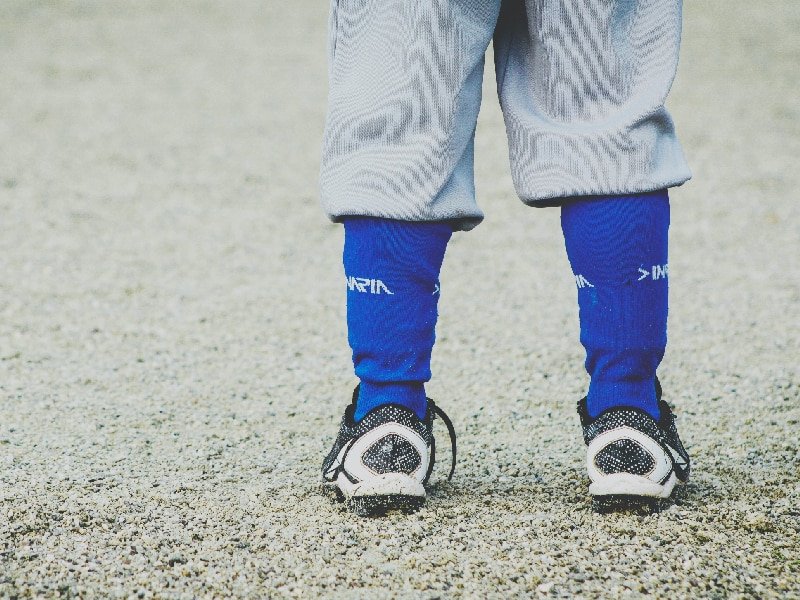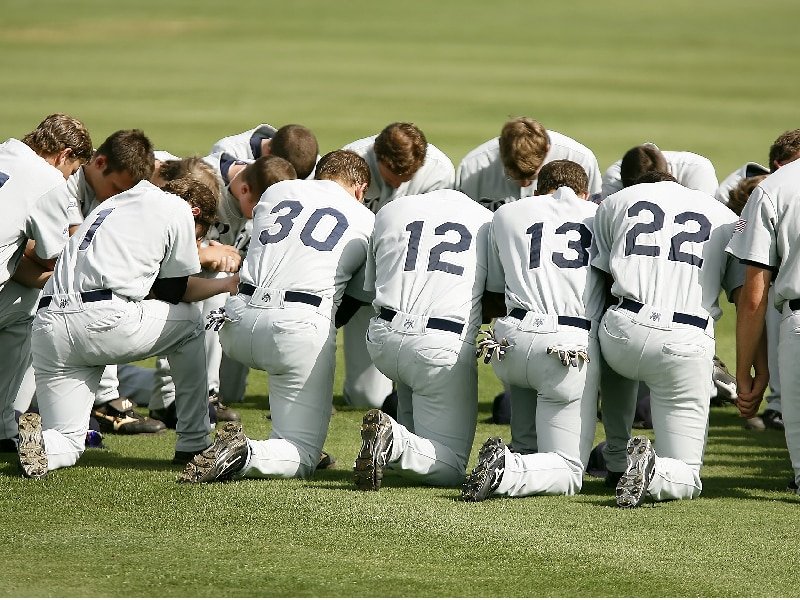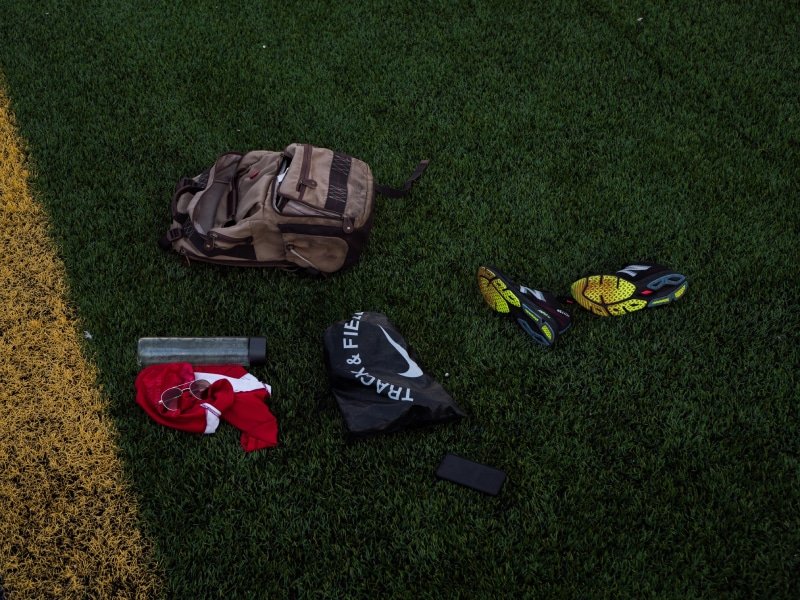Maybe you are wondering about the difference between soccer and baseball cleats; luckily, you’re in the right place. Although soccer and baseball cleats look similar, the difference between the two is significant enough to affect an individual’s play style. Despite their huge difference; however, some buyers accidentally interchange them when purchasing a pair of cleats.
Furthermore, both soccer and baseball cleats feature designs manufacturers intend for a specific purpose. For example, soccer cleats feature light materials and an aerodynamic design while baseball cleats feature sturdy materials as seen in metal baseball cleats. This difference between soccer and baseball cleats is only the tip of the iceberg; therefore, read along as we dive deeper into what makes the two types of cleats special.
Table Of Content
What’s the Difference Between Baseball and Soccer?
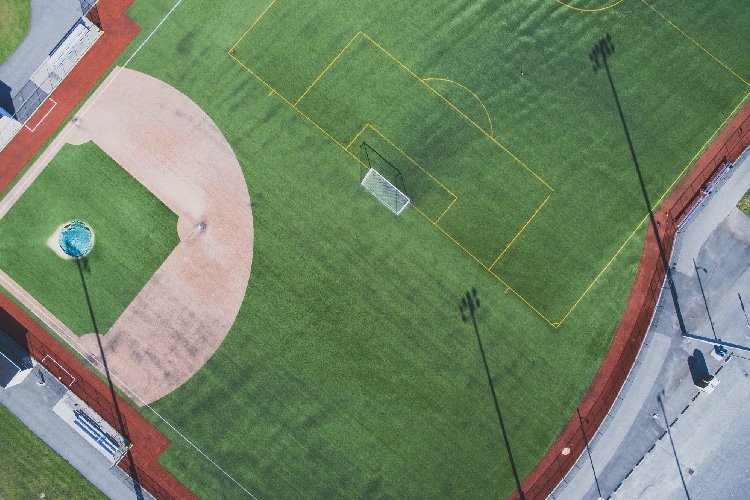
Soccer and Baseball are two different games with their own set of rules. In soccer, teams best each other as they try to score more goals than their opponent. This possession-based game style makes soccer a fast-paced contact sport that requires quick maneuverability and mobility around the pitch.
On the other hand, baseball’s rules require teams to exchange offensive and defensive roles every half of an inning. In addition, a team wins by scoring more runs than the other team. Therefore, an offensive team does their best to send as many players around the diamond as possible within an inning. Conversely, a defensive team tries to stop the offensive team by generating three outs through strike-outs or tagging. Afterward, when an offensive team reaches three outs, the teams swap roles or begin a new inning.
With all these facts laid down, the main difference between baseball and soccer games is their playstyle. In baseball, teams start to play after every pitch and switch roles every half of an inning. Therefore, this makes baseball ideally a turn-based sport. On the other hand, soccer players switch offensive and defensive roles depending on who has the football. This major play style difference makes manufacturers design the cleats for both sports differently.
Digging Deeper: The Key Differences Between Soccer and Baseball Cleats

Manufacturers specifically design their soccer cleats to provide athletes with ample traction for quick mobility and lateral movements. In addition, manufacturers construct a pair of baseball cleats as light as possible by incorporating thin but durable materials such as carbon fiber. Sometimes, soccer cleats even weigh 5.1oz, providing players with unrestricted foot movement to dribble the ball across the field.
However, unlike baseball cleats, soccer cleats feature strictly plastic spikes. In soccer, players need to control the ball, pass, tackle, and challenge players to gain possession of the ball. This feat requires full control of the player’s feet without restriction, explaining why soccer cleats are lightweight as possible.
On the other hand, a pair of baseball cleats feature differences compared to soccer cleats. Without further ado, let’s look at the various difference between soccer and baseball cleats:
Construction:
A key difference between soccer and baseball cleats is the way they are constructed. Baseball cleats feature a toe spike which manufacturers do not put under soccer cleats. Soccer cleats do not feature this because of the way players kick the ball when shooting. However, baseball players utilize toe spikes because of the added stability and maneuverability it provides.
Furthermore, baseball cleats usually feature a mid or high-cut construction, helping base runners and fielders to benefit from improved ankle support while running around the playing area. Conversely, soccer cleats usually feature a low-cut design, providing their players with the much-needed ankle flex, especially when passing and kicking the ball to the goal.
Types of Cleat:
Today, the various types of baseball cleats and soccer cleats cater to different types of playing surfaces. In addition, the cleat material of baseball and soccer cleats depends on the surface athletes play in. In this light, the performance of both soccer and baseball cleats would depend if their spikes are suitable for their playing area.
Different types of soccer cleats:
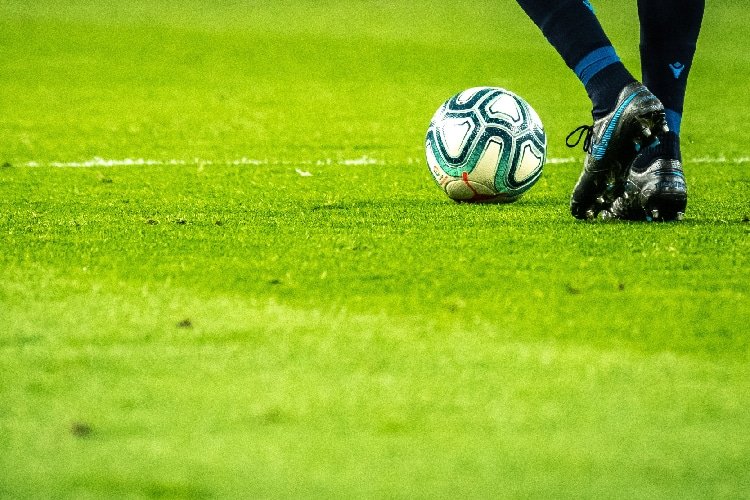
- Soft Ground (SG)
- Firm Ground (FG)
- Artificial Ground (Turf)
- Indoor Soccer
In soccer, firm ground is a freshly cut and maintained field. For firm ground playing surfaces, players wear rubber cleats with cone-shaped or bladed studs. On the other hand, a soft ground means that the ground features a near-muddy texture, making it slippery for simple trainers. Therefore, soccer players work around this by using longer studs that provide excellent traction and maneuverability on this type of field.
Moreover, an artificial grass or turf field features rubber grass and soil that is easier to maintain compared to firm and soft grounds. In addition, turf fields are typically even, providing players with a flat ground that helps them avoid injuries. Because of its construction, turf fields only require short studs that enable players to equally spread their weight on their feet.
Meanwhile, indoor courts don’t require any type of studs as rubber soles work effectively on them. However, similar to batting trainers, players still use specifically engineered soccer trainers for indoor football as this type of shoe can withstand ball impact during kicks.
Different types of baseball cleats:

- Metal Cleats
- Molded Cleats
- Turf Cleats
- Interchangeable Cleats
In baseball, metal cleats are the best in terms of traction and maneuverability on various types of surfaces except for flat ground. Because of the sharp permanently adjacent metal studs under this type of shoe, metal cleats dig in the pitch easily than molded and turf cleats. As a result, experienced players turn to use metal cleats as their main choice for baseball cleats. However, due to the sharp nature of metal cleats, it is advisable for younger players and beginners.s
On the other hand, the rival of metal cleats are molded cleats. Typically, molded cleats feature rubber and plastic studs which are popular among young players. Moreover, molded cleats are lighter and more versatile compared to metal cleats, making them the usual choice for beginners and younger players.
In addition, due to the construction of molded cleats, they are generally safer and cheaper compared to their metal counterpart. Even though they lack in terms of traction and maneuverability in comparison to metal cleats, we still recommend them for games as they are generally safer and easy to use compared to metal cleats.
Meanwhile, outside the metal vs. molded baseball cleats debate lies turf cleats. This type of cleats is comfortable to use on artificial fields or baseball and softball pitching mats as they provide players with an excellent balance distribution on their feet. In addition, turf cleats allow players to easily maneuver around artificial fields due to their short stud construction.
Finally, interchangeable cleats are the best of both worlds, allowing players to interchange between metal and molded cleats through screwable studs. This type of cleats is excellent for traveling players who need the freedom of having to choose their studs depending on the playing area.
Manufacturers
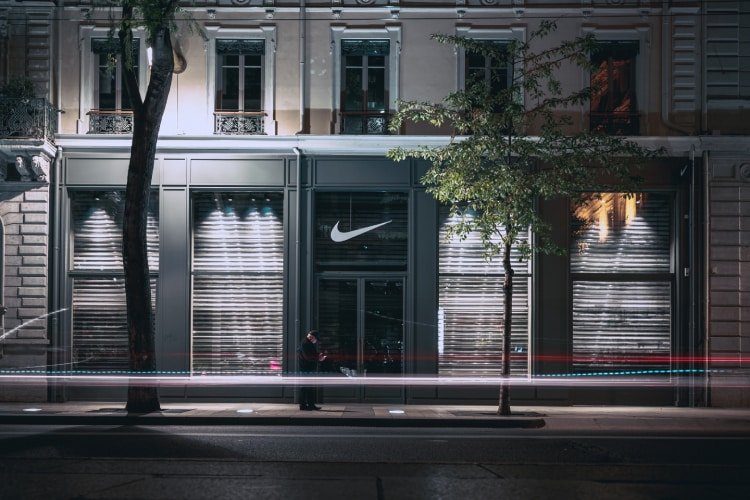
Today, many manufacturers provide excellent quality when it comes to soccer and baseball cleats. As we know, there is a clear difference between soccer and baseball cleats; as a result, there are various manufacturers that dominate the market for each respective sport. The cleats from the following manufacturers are one of the best in their respective sport:
For soccer cleats, the best manufacturers are:
- Nike
- Adidas
- Puma
- Mizuno
- Umbro
- Under Armour
For baseball cleats, the best manufacturers are:
- Nike
- Under Armour
- Mizuno
- Adidas
- New Balance
- Easton
Conclusion

In conclusion, the are a few key difference between soccer and baseball cleats that makes the two products distinct from each other. These differences are present within the cleats’ construction, type, and cut design. However, even both cleats are different, we can also see some similarities such as how they efficiently grip the playing area.
The manufacturers of both soccer and baseball cleats are almost identical with Adidas and Nike leading the competition. Still, both types of cleats are different and should be worn in their sport respectively for the best performance possible.
Frequently Asked Questions about Baseball and Soccer Cleats
Yes, soccer cleats work for baseball because of their versatility. In addition, officials will allow the use of soccer cleats during official baseball games. However, we advise against this as soccer cleats manufacturers specifically designed these shoes solely for soccer. For the ultimate performance, you should research your position and the cleats excellent for it. For example, some manufacturers produce the best baseball cleats for pitchers or the best baseball cleats for outfielders.Do soccer cleats work for baseball?
As stated, baseball players can wear soccer cleats on their baseball games; however, the opposite cannot be done. For soccer games, we advise soccer shoes as baseball shoes do not have the integrity and durability to withstand ball kicks. Furthermore, baseball shoes do not provide the same freedom low-cut soccer shoes provide. Therefore, it is possible for your child to get injured if they wear a pair of baseball cleats in a soccer game.Can my kid wear baseball cleats for soccer?
Youth leagues such as Little League prevents their players from wearing metal cleats; however, they may start wearing one when they reach high school. Therefore, we advise parents to let their children wear metal cleats at least a year before they enter high school around 13 years old.What age are metal baseball cleats for?
The spikes under baseball cleats help dig dirt to provide traction and maneuverability during games. As a result, changing directions especially for base runners, infielders, and outfielders are easier. Therefore, you have to wear baseball cleats when playing in a baseball game.Why do you have to wear cleats in baseball?
Yes, metal cleats are allowed in high school and collegiate baseball leagues. However, youth leagues under the high school division still prohibit their players from wearing metal cleats.Are metal cleats allowed in high school baseball?





